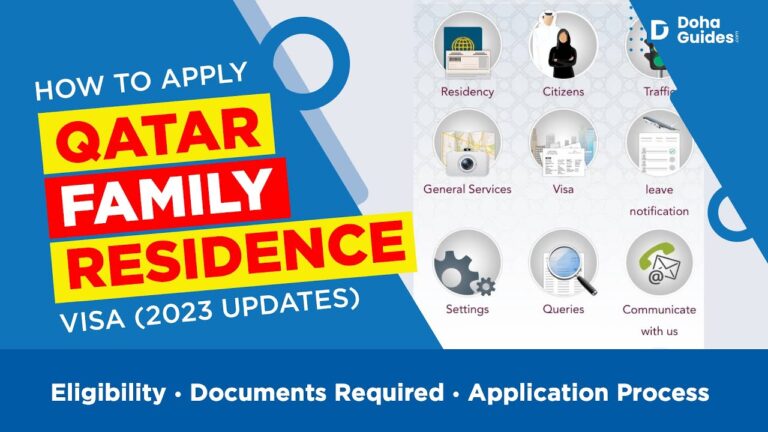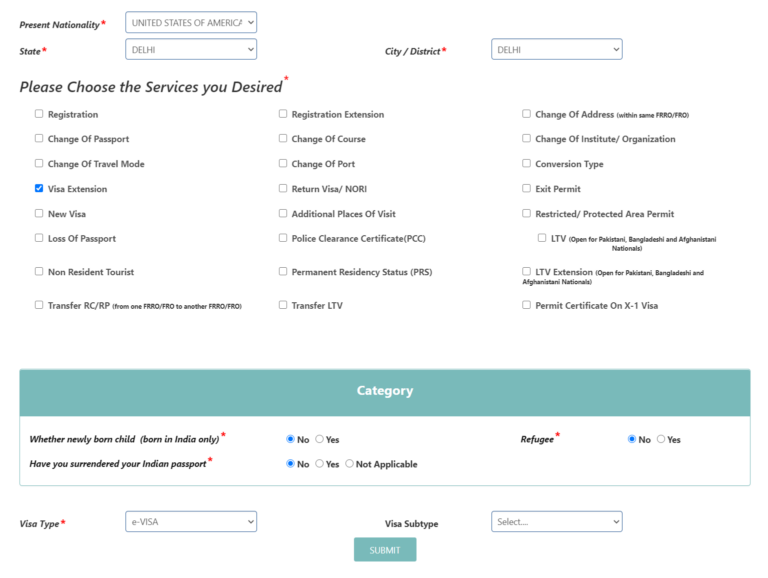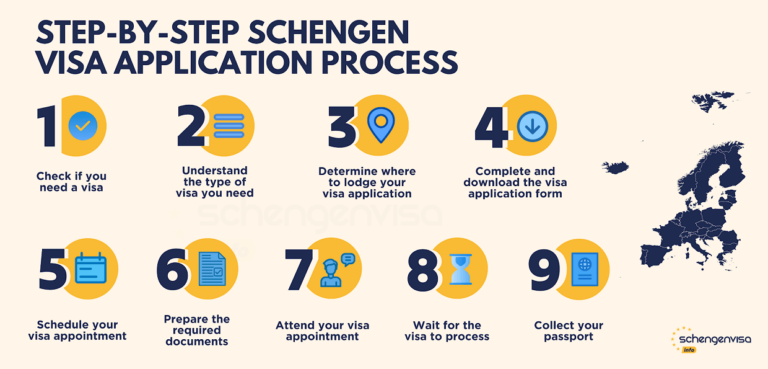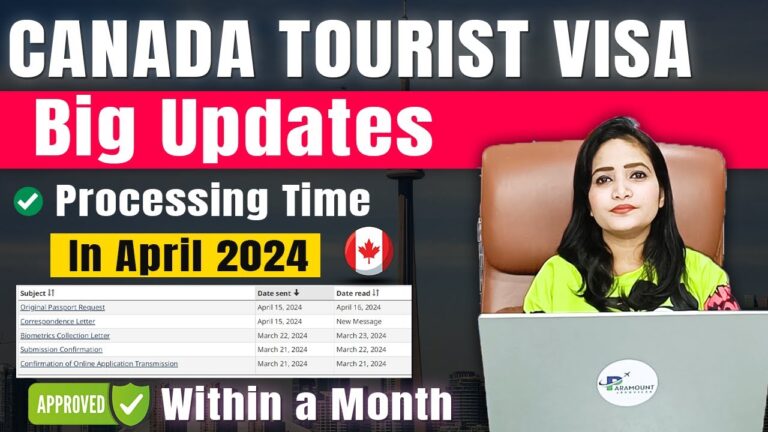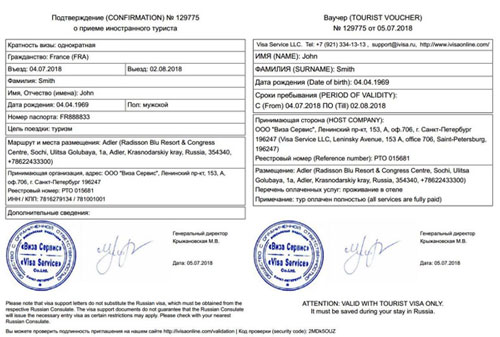Your Ticket to Extending Fun: Demystifying Tourist Visa Extension
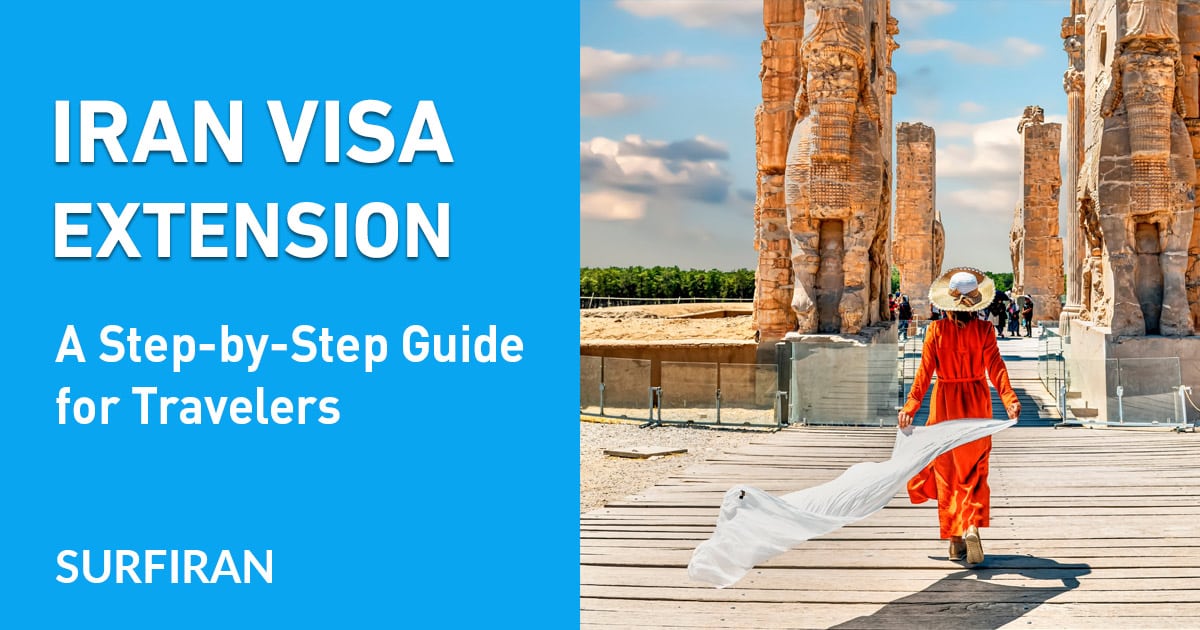
Understanding Visa Extensions
Importance of Visa Extension
Understanding the significance of extending your tourist visa is vital for maintaining legal status while enjoying an extended stay in your destination country. When you extend your visa, you stay within the confines of the law, ensuring a smooth and hassle-free experience during your trip.
The primary reason to file for a tourist visa extension is to avoid the consequences associated with overstaying. By applying for an extension, you also open up the possibility of longer tourist adventures, allowing you to immerse yourself completely in your travel experiences without the constant worry of impending departure dates.
Consequences of Overstaying
Overstaying your visa can lead to significant repercussions. If you remain in the United States longer than authorized, you may be barred from returning or deported (USCIS.gov). It’s crucial to check the expiration date on the lower right-hand corner of your Form I-94, Arrival-Departure Record.
Some potential consequences of overstaying include:
- Deportation from the United States
- Bar on re-entry for a specified period
- Impact on future visa applications
- Possible fines or penalties
To avoid these outcomes, it is recommended to apply to extend your stay at least 45 days before your authorized stay expires.
| Consequences of Overstaying | Description |
|---|---|
| Deportation | Forced removal from the country |
| Bar on Re-entry | Prohibited from re-entering the country for a specified period |
| Impact on Future Visas | Difficulty obtaining future visas |
| Fines or Penalties | Possible financial repercussions |
For more information on the application process and required documents for extending your stay, visit tourist visa application form and documents for visa interview.
Always be mindful of your visa status and take action well in advance to extend your stay legally and avoid any adverse effects that overstay might bring. For detailed guidance on extending your stay, refer to steps to extend stay.
Tourist Visa Duration
Understanding the duration of your stay on a tourist visa is crucial to ensure you follow visa regulations and enjoy your trip stress-free.
Maximum Stay for Tourists
In the United States, the maximum stay for tourists holding a B-2 visa is generally up to 180 days or 6 months. However, the U.S. Customs and Border Protection (CBP) officer at the port of entry can determine a shorter period based on individual circumstances. It’s essential to check the date stamped on your Form I-94, Arrival/Departure Record, to confirm your authorized stay duration.
| Visa Type | Maximum Stay Duration | Can Apply for Extension? |
|---|---|---|
| B-2 Visa | 6 months | Yes |
For other countries, maximum stays vary, so ensure you understand the specific regulations. Learn more about visa on arrival countries for U.S. citizens to plan your travels better.
Extending Stay with B-2 Visa
If you wish to extend your stay beyond the initial 6 months, filing an extension request is the next step. For a B-2 visa, an extension can be granted for up to an additional six months, if the U.S. Citizenship and Immigration Services (USCIS) approves the justification. To apply for an extension, you must file Form I-539, Application to Extend/Change Nonimmigrant Status, before your current authorized stay expires. The request should be submitted at least 45 days before the expiration date on your I-94.
Learn more about the tourist visa extension process and ensure you follow all necessary steps to avoid overstaying or legal issues.
| Visa Type | Initial Stay Duration | Extension Duration | Total Possible Duration |
|---|---|---|---|
| B-2 Visa | 6 months | 6 months | 1 year |
For specific cases like tourist visa for parents visiting from other countries, understanding these regulations is vital to ensure a smooth and lawful stay.
Planning to extend your stay? Visit our detailed guide on tourist visa application form and tourist visa support documents to make your application process easier.
Process of Extension
Navigating the tourist visa extension process requires a clear understanding of the necessary steps and timeframes. Here’s how you can effectively manage this process.
Filing Forms for Extension
To extend your stay in the United States as a tourist, you need to file specific forms depending on your visa type. Commonly, this involves submitting a Petition for a Nonimmigrant Worker (Form I-129) or an Application to Extend/Change Nonimmigrant Status (Form I-539). Additional forms like the Supplemental Information for Application to Extend/Change Nonimmigrant Status (Form I-539A) or Petition for a CNMI-Only Nonimmigrant Transitional Worker (Form I-129CW) might be necessary. Make sure to gather all the tourist visa support documents required to avoid any delays.
Here’s a quick overview of the forms:
| Form Number | Form Name | Purpose |
|---|---|---|
| I-129 | Petition for a Nonimmigrant Worker | Extending nonimmigrant work stay |
| I-539 | Application to Extend/Change Nonimmigrant Status | Extending/Changing nonimmigrant status |
| I-539A | Supplemental Information for Application to Extend/Change Nonimmigrant Status | Additional information for I-539 |
| I-129CW | Petition for a CNMI-Only Nonimmigrant Transitional Worker | Extending CNMI-Only nonimmigrant status |
Timeframe for Applying
Applying for a visa extension isn’t something you should leave to the last minute. According to USCIS.gov, it is advisable to submit your application at least 45 days before the expiration date of your authorized stay, indicated in the lower right-hand corner of your Form I-94, Arrival-Departure Record.
- Ideal Application Period: At least 45 days before the expiration of your current stay.
- Form I-94 Review: Ensure you review the expiration date on Form I-94 to avoid overstaying.
Failing to apply within this period can lead to significant consequences, including being barred from returning to the United States and possibly facing removal (deportation).
For detailed steps and additional considerations, refer to the section on steps to extend stay.
By following the appropriate steps and adhering to the recommended timelines, you can ensure a smooth and hassle-free tourist visa extension process.
Eligibility and Restrictions
To successfully navigate the tourist visa extension process, one must be aware of the eligibility criteria and any potential restrictions. Understanding these factors is crucial for ensuring your application meets the necessary requirements.
Criteria for Extension
When applying for a tourist visa extension, certain criteria must be met to be eligible. The following are key factors considered by immigration authorities:
- Valid Nonimmigrant Status: Your current visa status must be valid. You must also ensure your stay is not beyond the period of admission indicated on your I-94 form (USCIS).
- Intent to Leave: You must demonstrate a genuine intent to leave the United States after the extension period. Proof of ties to your home country, such as property, employment, or family responsibilities, is often required.
- No Pending Departure Schedule: You should not have a pending application for permanent residency in the U.S.
- Financial Stability: Proof of financial means to support yourself during the extended stay without needing to work unlawfully. This is often shown through bank statements, proof of sponsorship, or other financial documents (tourist visa financial requirements).
- Non-Criminal Status: Your record must be clear of any criminal offenses or violations of U.S. immigration laws (USCIS).
Ineligible Categories
Not everyone can extend their tourist visa. Here are some ineligible categories for extension:
- Visa Waiver Program Entrants: Travelers visiting the U.S. on the Visa Waiver Program (VWP) cannot apply for a stay extension.
- Crewmembers (D Visa Holders): Individuals admitted as crewmembers cannot extend their stay.
- Transit (C Visa Holders): Visitors in transit through the U.S., holding a C visa, are ineligible for an extension.
- Fiancé(e) Visa Holders (K-1 Visa): Those in the U.S. under a K-1 visa awaiting marriage cannot apply for a tourist visa extension.
- Individuals Without a Valid Visa: Those whose visa status has expired or have an invalid visa cannot request an extension.
| Category | Eligibility for Extension |
|---|---|
| Valid Nonimmigrant Status | Eligible |
| Visa Waiver Program Entrants | Ineligible |
| Crewmembers (D Visa Holders) | Ineligible |
| Transit Visitors (C Visa Holders) | Ineligible |
| Fiancé(e) Visa Holders (K-1 Visa) | Ineligible |
| Financially Self-Sufficient | Eligible |
| Non-Criminal Status | Eligible |
To ensure you meet the criteria and understand potential restrictions, it is advisable to review all guidelines carefully. For more detailed information, refer to the tourist visa application form and other related resources on our website.
If you are not sure about your eligibility, it is beneficial to consult with immigration experts or refer to official sources like USCIS and other dedicated visa guides.
Applying for Extension
Steps to Extend Stay
If you need to extend your stay in the United States, there are specific steps you need to follow to ensure your extension is processed smoothly. The process generally involves completing and submitting the appropriate forms to the United States Citizenship and Immigration Services (USCIS).
- Determine Your Eligibility: Before applying, make sure you are eligible to extend your stay. Tourists on a B-2 visa can request to extend their stay up to one year (Boundless).
- Complete Form I-539: The primary form used to request an extension for a tourist visa is Form I-539, Application to Extend/Change Nonimmigrant Status.
- Gather Required Documents: Include all necessary supporting documents such as your current visa, passport, and proof of financial stability. For a complete list of required documents, check our tourist visa checklist.
- Submit the Application: You can file Form I-539 online or by mail. Be sure to submit it before your current visa expires.
- Check for Confirmation: After submission, you will receive a confirmation notice from USCIS.
For additional guidance, refer to our detailed page on how to apply for tourist visa.
Fee and Biometrics
When applying for a tourist visa extension, you will need to pay a fee and might need to provide biometrics, depending on the date your form is postmarked.
- Filing Fee: The filing fee for Form I-539 is $470 (VisitorsCoverage).
| Action | Cost |
|---|---|
| Form I-539 Fee | $470 |
- Biometrics: As of October 1, 2023, biometrics are no longer required for Form I-539 (VisitorsCoverage). If you lodged your form before this date, additional biometrics fees and requirements may apply.
It’s essential to check the current guidelines and requirements on the official USCIS site or relevant resources before applying.
For more information, please visit our internal resource on tourist visa biometrics.
Processing and Wait Time
Timelines for Approval
Understanding the timelines for the approval of your tourist visa extension can help in planning your stay. The approval process duration may vary depending on several factors, including the type of visa you hold and the volume of applications being processed by USCIS.
| Visa Type | Usual Extension Approval Time |
|---|---|
| B-1 Visa | 2-3 months |
| B-2 Visa | 2-3 months |
| D Visa | 1-2 months |
| F Visa | 3-4 months |
For the best chance of having your extension granted, it is recommended to apply at least 45 days before your current visa expires. To monitor your application status, you can check the USCIS case status online tool.
Handling Denials
In the event that your extension request is denied, you will be given a specific period to depart from the United States (VisitorsCoverage). Leaving within this allocated time is crucial to avoid being classified as an over-stayer and facing potential complications.
Steps to follow if your extension is denied:
- Receive Decision Notice: Understand the reason for denial outlined in the USCIS notice.
- Plan Departure: Leave the country within the specified timeframe to avoid overstay penalties.
- Consult Legal Advice: If you believe the denial was in error, seek advice from an immigration attorney.
Overstaying your visa can have severe consequences. You may be barred from returning to the United States and may also face removal (deportation) proceedings. To understand more about the impact of overstaying, it’s helpful to read about the consequences of overstaying.
Learn more about different visa categories and their duration by visiting our section on tourist visa validity period.
For a smoother extension process, ensure that all support documents are complete and filed timely. For more detailed guidance, refer to our article on the tourist visa application process.
Specific Visa Details
Variations in Visa Duration
Understanding the variations in visa duration can help you plan your stay more effectively. Different countries and visa types come with varying lengths of permitted stays.
| Visa Type | Maximum Initial Stay | Possible Extension |
|---|---|---|
| B2 Visa (USA) | 6 months | Up to 1 year (Siam Legal) |
| Schengen Visa | 90 days | Cannot be extended beyond 90 days in a 180-day period |
| UK Visitor Visa | Up to 6 months | Not typical, must apply for a different visa |
Be aware that some visa categories allow for an extension of stay depending on your reason and justification. For instance, a US B-2 Visa for tourism allows you to apply for an extension which, if approved, can extend your stay for up to 6 months. Justifications must be submitted to USCIS within three months of entering the U.S. (Siam Legal). More details about visa types and durations can be found in our tourist visa validity period section.
Different Visa Purposes
Different visas serve diverse purposes and have specific conditions and durations. Knowing which visa aligns with your purpose of travel is crucial for compliance and planning.
- Tourist Visa: Primarily for touring, sightseeing, and visiting friends and family. Example: US B2 Visa, Schengen Visa.
- Student Visa: For studying in a foreign institution. Example: US F-1 Visa.
- Work Visa: For working in a foreign country. Example: US H-1B Visa.
- Business Visa: For attending business meetings, conferences, or negotiations. Example: US B1 Visa.
- Medical Visa: For receiving medical treatment. Example: UK Medical Visitor Visa.
For comprehensive details on different visa purposes, consult our tourist visa requirements page.
To apply for a visa extension, one must file the necessary forms and meet specific criteria depending on the visa type, as explained under tourist visa application process. Additionally, it’s essential to manage expectations concerning processing times and potential denials; more information is available in the expedited tourist visa processing section.
Always review the specific requirements related to your visa type, whether you need further details on filing forms, fees, or documents for visa interview, to ensure a smooth and lawful extension process.
By understanding these variations and purposes, you will better navigate the tourist visa extension process. Stay informed, abide by stipulated guidelines, and always plan ahead to make the most of your travel experience.
Planning Your Extension
Timely Submission Tips
When planning to extend your stay in the United States on a tourist visa, it’s crucial to adhere to certain guidelines to ensure a smooth process. Timely submission of your extension application is essential:
- Start Early: Begin gathering the necessary documents and information well in advance of your current visa expiry date.
- 45-Day Rule: Submit your extension application, Form I-539, to the USCIS at least 45 days before your I-94 travel authorization expires (VisitorsCoverage).
- Required Documents: Ensure you have all the supporting documents such as proof of financial stability, reason for extension, and valid identification.
- Check the Filing Fee: As of now, the Form I-539 filing fee for a US Visitor Visa Extension is $470. Biometrics are no longer required for forms postmarked later than October 1, 2023.
- Track Your Application: Utilize the USCIS online tools to monitor the status of your application and respond promptly to any additional information requests.
For more tips and required documents, visit our tourist visa checklist.
Managing Expectations
While applying for a tourist visa extension, managing your expectations is key:
- Approval Timelines: Processing times for extension requests can vary. It’s best to assume that it will take several weeks to a few months. Refer to tourist visa processing time for more details on current timelines.
- Possible Denials: Be prepared for the possibility that your extension request might be denied. If this occurs, you need to make plans to leave the country immediately to avoid any consequences of overstaying.
- Consequences of Overstaying: Overstaying your visa could result in severe penalties, including deportation, and a bar on re-entry into the United States.
- Valid Reasons: Your extension request should be backed by a genuine reason. Common acceptable reasons include extended medical treatment, urgent family matters, or unforeseen travel complications.
For additional guidance on handling potential outcomes and further preparation, refer to our guide on expedited tourist visa processing.
Using these tips, ensure that you manage your extension process efficiently and maintain compliance with immigration regulations to enjoy an extended stay without legal hassles.

